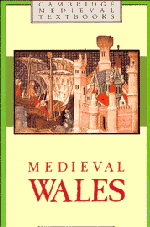Book contents
- Frontmatter
- Contents
- List of figures
- List of maps
- Preface
- 1 Wales in the dark ages
- 2 The Normans in Wales
- 3 The marcher lordships
- 4 The church in Wales
- 5 Crisis of identity: towards a principality of Wales
- 6 The Edwardian conquest
- 7 Under the heel: Wales in the fourteenth century
- 8 Resurgence and decline: the fifteenth century
- 9 A new dawn? The coming of the Tudors
- Select bibliography
- Index
- Cambridge Medieval Textbooks
- Frontmatter
- Contents
- List of figures
- List of maps
- Preface
- 1 Wales in the dark ages
- 2 The Normans in Wales
- 3 The marcher lordships
- 4 The church in Wales
- 5 Crisis of identity: towards a principality of Wales
- 6 The Edwardian conquest
- 7 Under the heel: Wales in the fourteenth century
- 8 Resurgence and decline: the fifteenth century
- 9 A new dawn? The coming of the Tudors
- Select bibliography
- Index
- Cambridge Medieval Textbooks
Summary
Between 1100 and 1135 Norman expansion in Wales reached its peak, and it would be easy to present this period as one of steady Norman advances and of uncertainty and decline for the Welsh princely dynasties. But that would obscure two major elements in the story. The first is that conquests in Wales were achieved slowly and were confined to a limited area. The Norman onslaught on England under William the Conqueror was swift and devastating in its results and it affected the whole kingdom. The English aristocracy had no time to learn the tactical lessons of the Norman invasions, and they could not match the advantage which the conquerors drew from their use of castles and mounted knights. In Wales, by contrast, there was no wholesale conquest; only parts of the country were overrun. The Welsh had ample time to learn the tactical lessons on which survival might depend. They never matched the skills and advantages of the Norman cavalry, but in a country which favoured guerilla warfare and the use of lightly armed, mobile foot-soldiers, that was not a matter of critical significance. Welsh leaders did learn the advantages of fortifications, and from the earliest decades of the twelfth century they began, tentatively but effectively, to use defensive earthworks and, more slowly, to repair and use Norman castles once they had been taken. The second major element is that the Normans were never able to pour men and money into Wales on a scale which would guarantee secure tenure of their conquests.
- Type
- Chapter
- Information
- Medieval Wales , pp. 44 - 66Publisher: Cambridge University PressPrint publication year: 1990



